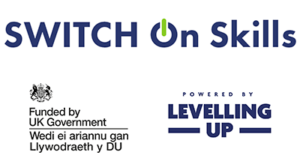Ice Cream!!! Solid, Liquid or Gas??
Ice cream, the beloved frozen treat enjoyed by millions worldwide, is a fascinating concoction that blurs the lines between states of matter. While it might seem straightforward as a solid, delve a bit deeper, and you’ll find that ice cream’s composition and behaviour pose exciting questions about its physical state.
At its core, ice cream is a colloid—a mixture of tiny ice crystals, liquid water, fat globules, and sugar molecules. When we think of solids, liquids, and gases, ice cream seems to exhibit all three characteristics when we think of solids, liquids, and gases. Let’s break it down.
In its frozen state, ice cream unquestionably behaves like a solid. The ice crystals give it structure and form, providing that delightful scoopable texture. However, as it starts to melt, the transition begins. The melting process introduces liquid water into the mix, turning the solid ice cream into a slushy, partially liquid state.
As we indulge in our favourite ice cream on a warm day, we might notice the creamy texture as it melts in our mouths. This creaminess is attributed to the fat content, contributing to the liquid-like sensation. In this sense, ice cream takes on the properties of a liquid as we consume it.
Now, where does the gas come into play? While ice cream doesn’t turn into a gas, the vapour you see when you open a tub of ice cream is caused by the temperature difference. When you take ice cream out of the freezer and expose it to the warmer air, the water molecules on the surface evaporate, forming a misty vapour. So, in a way, ice cream even has a gas-like presence.
In conclusion, ice cream is a versatile treat that defies the traditional boundaries of states of matter. It transitions seamlessly between solid and liquid states, and although it doesn’t transform into a gas, it playfully flirts with gaseous tendencies. The next time you enjoy a scoop of your favourite flavour, relish in the science behind this delightful and complex frozen dessert!

Find out more about SWITCH On Skills here: https://www.now-switch.wales/netzeroskills/switch-on-skills/


